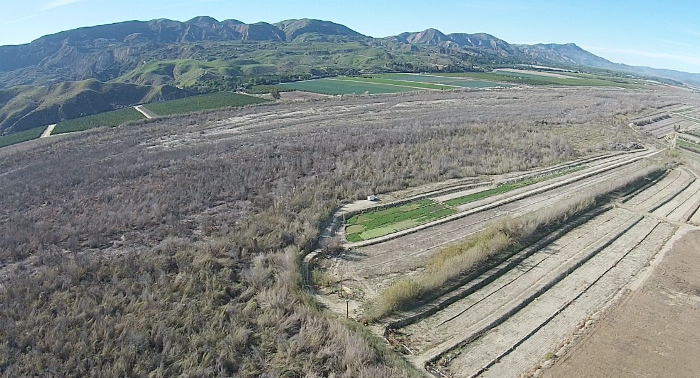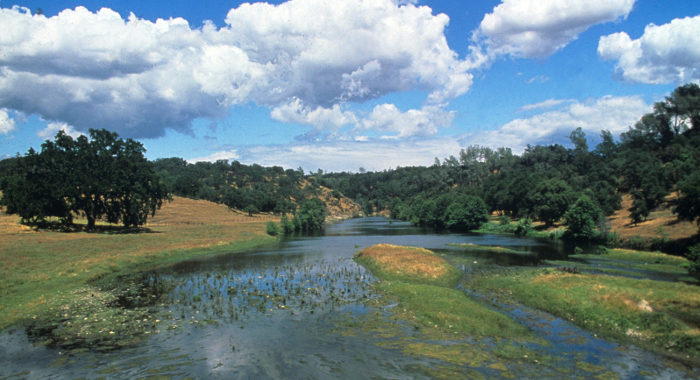In a normal year, groundwater accounts for 40 percent of California’s water supply. That number jumps to 60 percent during a drought. It’s also critically important for sustaining certain types of aquatic, terrestrial and coastal ecosystems.
Yet decades of unregulated groundwater withdrawal has compromised that ability to provide for people and nature. Wells dry up, water quality declines, and rivers, wetlands, and springs disappear.
To address this problem, California passed legislation requiring that groundwater basins be managed sustainably. We still face gaps, however, in our understanding of how to manage these basins to ensure the health of the ecosystems they support. Conservancy scientists are working with water managers and state agencies to close those gaps.


Rohde MM, Seapy B, Rogers R, Castañeda X, editors
Plant and animal species can rely on groundwater directly or indirectly for water, nutrients, and stable temperatures. The Critical Species LookBook is a compendium of 84 state and federally listed…Samuel C. Zipper, Tom Gleeson, Ben Kerr, Jeanette K. Howard, Melissa M. Rohde, Jennifer Carah, Julie Zimmerman
Reductions in streamflow from groundwater pumping can negatively impact water users and aquatic ecosystems but are challenging to estimate due to the time and expertise required to develop numerical…Kirk Klausmeyer, Falk Schuetzenmeister, Nathaniel Rindlaub, Tanushree Biswas, Melissa M. Rohde, Jeanette Howard
94,333 unique ecosystems depend on groundwater in California. GDE Pulse lets you see how they have changed over the last 30 years. Groundwater managers and environmental stakeholders often lack…Sarah Heard, E.J. Remson, Matthew Fienup, Siobhan King
In 2014, California passed the Sustainable Groundwater Management Act (SGMA) which regulates groundwater at scale for the first time, requiring the state’s largest source of stored water to be…Jacob E. Lucero, Taylor Noble, Stephanie Haas, Michael Westphal, H. Scott Butterfield, Christopher J. Lortie
Previous work at the Carrizo Plain by this team in 2018 showed that native shrubs facilitated endangered blunt-nosed leopard lizard populations, and should be considered part of plans for habitat…Joseph A. E. Stewart, H. Scott Butterfield, Jonathan Q. Richmond, David J. Germano, Michael F. Westphal, Erin N. Tennant, Barry Sinervo
Due to limited water resources, there is a global trend toward the retirement of farmland, especially in the San Joaquin Valley in California where the Sustainable Groundwater Management Act could…Rodd Kelsey, Abby Hart, H. Scott Butterfield, Dan Vink
Restoring habitat in retired farmland could reduce water demand and provide ecosystem services for farmers and local communities. In some areas of California, as a result of the Sustainable…Chris Lortie, Alex Filazzola, Rodd Kelsey, Abigail Hart, Scott Butterfield
Over the past 100 years, California's Central Valley has undergone a massive transformation from desert to a mosaic of farmland and urban development. This transformation has also meant many…Sarah Heard, E.J. Remson, Siobhan King, Sandi Matsumoto
The Conservancy has a vested interest in preserving farms in Ventura County because they buffer important river and wetland habitat from nearby urban lands. In western Ventura County, over…Sandi Matsumoto, Gregg Werner, Melissa Rohde, Kirk Klausmeyer
Groundwater dependent ecosystems (GDEs) are plant and animal communities that require groundwater to meet some or all of their water needs. GDEs provide important benefits to California including…Prepared by Andrew Zdon & Associates Inc. for Transition Habitat Conservancy, The Bureau of Land Management, and The Nature Conservancy
The Mojave Desert within California, which spans four counties, exists as one of the most important ecological regions in the southwestern United States. Both the groundwater and surface water in the…Sophie S. Parker, Jim Moore, Leonard Warren
The 185 mile-long Amargosa River, one of only two rivers with perennial flow in the California portion of the Mojave Desert, is fed by an ancient groundwater aquifer. The river provides habitat for…Rohde, M.M., S. Matsumoto, J. Howard, S. Liu, L. Riege, E.J. Remson
California's Sustainable Groundwater Management Act (SGMA) of 2014 is landmark legislation that empowers local agencies, known as groundwater sustainability agencies, to sustainably manage…H. Scott Butterfield, Rodd Kelsey, Abigail Hart, Tanushree Biswas, Mark Kramer, Dick Cameron, Laura Crane, Erica Brand
California's Sustainable Groundwater Management Act (SGMA) established a framework for sustainable, local groundwater management. SGMA requires groundwater-dependent regions to…Energy+Environmental Economics for The Nature Conservancy, Arne Olson, Doug Allen, Vivian Li, Emily Leslie
California leads the nation in the transition to a clean energy economy. However, current transmission planning processes limit development of new renewable resources. This report (slide deck),…Melissa M. Rohde, Ray Froend, Jeanette Howard
Groundwater is a vital water supply worldwide for people and nature. However, species and ecosystems that depend on groundwater for some or all of their water needs, known as groundwater dependent…Debra Perrone, Melissa M. Rohde
Managed aquifer recharge (MAR) projects can play an important role in ensuring California manages its groundwater sustainably. This study, the first to investigate the benefits and economic costs…